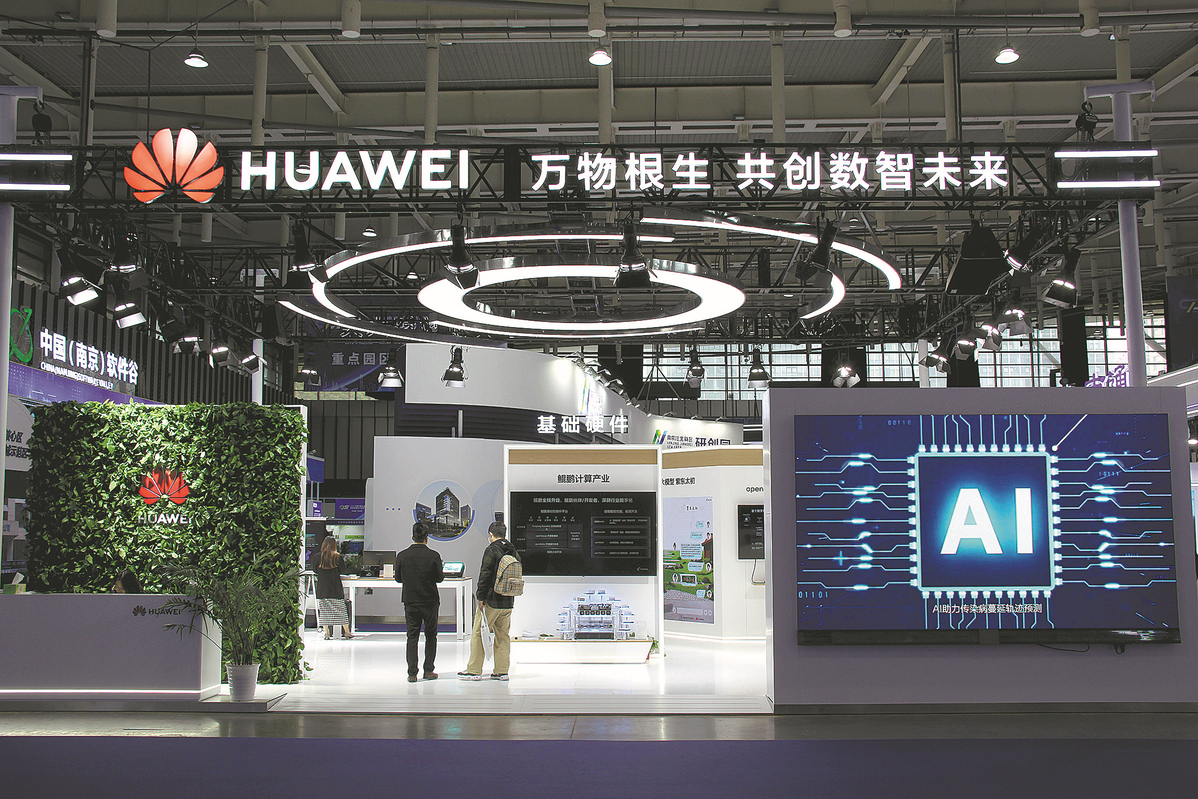Huawei's chip software heralds breakthrough
By MA SI | CHINA DAILY | Updated: 2023-03-25 09:10

Huawei Technologies Co said it has developed electronic design automation or EDA tools for chips above 14 nanometers by partnering with domestic companies, marking a crucial breakthrough for China's semiconductor industry amid US government restrictions.
Dubbed the "cradle" of integrated circuits, EDA is a software widely used in the sector and is of great importance to the entire process of designing chips.
Xu Zhijun, rotating chairman of Huawei, said the company has completed the localization of EDA tools for chips above 14nm by teaming up with domestic partners and will complete comprehensive verification this year.
Huawei confirmed to China Daily on Friday that Xu made the remarks in a meeting in late February.
China has long relied on US companies such as Cadence and Synopsys for EDA tools. The EDA tools for 14 nm chips are considered midrange products but it still marks a breakthrough, experts said.
Shares of Chinese companies involved in electronic design automation climbed on Friday. Shenzhen-listed Empyrean Technology Co, for instance, rose by more than 2 percent.
A string of Chinese insurance companies has tailor-made insurance services to promote the use of domestically developed chip products such as EDA tools, people familiar with the matter told China Daily.
Such insurance services, which have already been used to support homegrown auto chip companies in the past two years, can help Chinese semiconductor enterprises lower research and development costs and accelerate efforts to achieve breakthroughs in core technologies, they said.
The progress in EDA tools is part of a broader push by Huawei to develop domestic development tools for hardware, software and chips amid the US government's lingering restrictions.
Xu said the company has replaced 78 software tools affected by Washington's ban on domestically developed tools, which can ensure the continuity of its research and development efforts amid US restrictions.
Xu said although the company has achieved many breakthroughs in product development tools over the past three years, it still faces formidable challenges.
Huawei will redouble its efforts to attract more global talent in order to achieve a strategic breakthrough in the area, he added.
Xiang Ligang, director-general of the Information Consumption Alliance, a telecom industry association, said the US government's export controls over advanced chip technologies to China are motivating Chinese companies to double down on the allocation of resources to achieve breakthroughs.
Last year, sales revenue in the Chinese chip design sector reached 534.57 billion yuan ($78 billion), up by 16.5 percent year-on-year, showcasing sectoral resilience amid US export restrictions, according to preliminary data from the China Semiconductor Industry Association, or CSIA.
Wei Jianguo, former vice-minister of commerce and vice-chairman of the China Center for International Economic Exchanges, said: "The chip industry is known for being highly intensive in capital, talent and technology. These three factors are all needed to ensure its healthy development. We have to beef up our indigenous R&D push."
























